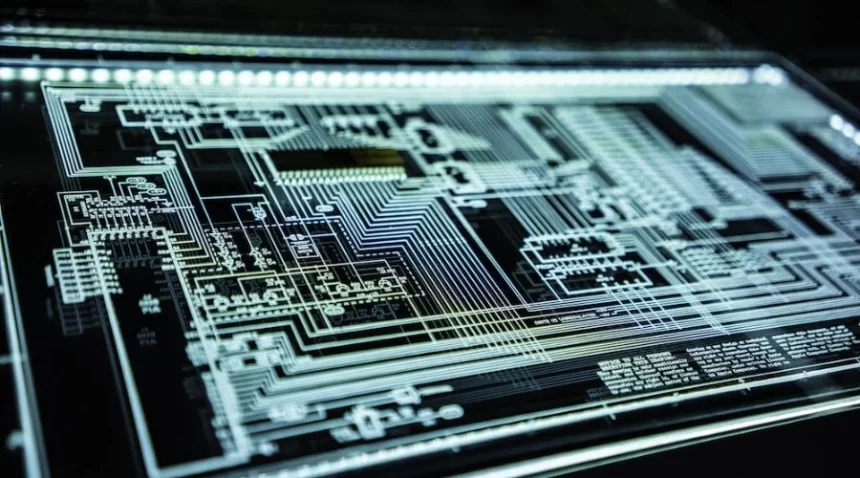Electronics have come a long way since their inception, and the future looks more exciting than ever. With emerging technologies such as Artificial Intelligence (AI), Virtual Reality (VR), and the Internet of Things (IoT), we are set to witness a revolution in the electronics industry. The possibilities are endless, and the future is full of opportunities for businesses and consumers alike. From smart homes to autonomous vehicles, the integration of these technologies will change the way we live, work, and interact with the world around us. In this article, we will take a closer look at some of the most promising emerging technologies in the electronics industry and explore how they are expected to shape the future of our world. Get ready to be amazed by what the future holds!
Internet of Things (IoT) and its impact on electronics
The Internet of Things (IoT) is revolutionizing the way we interact with everyday objects. IoT refers to the interconnectivity of everyday objects, which can communicate with each other and with humans. This technology is changing the way we live by enabling us to control our homes, cars, and appliances from anywhere in the world. IoT is also transforming the way businesses operate by allowing them to collect and analyze data in real-time, making operations more efficient and cost-effective.
One of the most significant applications of IoT is in the smart home sector. Smart homes use IoT technology to connect everyday objects such as lights, thermostats, and security systems, enabling users to control them remotely. For example, a user can turn on the lights in their home from their smartphone while they are away on vacation. Smart homes are also becoming more energy-efficient, with IoT technology enabling the automation of heating and cooling systems.
IoT technology is also being used in the healthcare sector to improve patient care. Wearable devices such as smartwatches can monitor a patient’s vital signs and alert medical professionals if there are any concerns. This technology is especially useful for elderly patients who live alone and may need assistance in case of an emergency.
Artificial Intelligence (AI) and its role in the future of electronics
Artificial Intelligence (AI) is changing the way we interact with our devices by enabling them to learn from our behavior and make decisions based on that data. AI is being used in a wide range of applications, from virtual assistants to self-driving cars. AI can analyze large amounts of data to identify patterns and make predictions, which can help businesses make more informed decisions.
One of the most significant applications of AI is in the field of robotics. AI-powered robots can perform tasks that are too dangerous or difficult for humans, such as exploring space or cleaning up hazardous waste. AI is also being used in manufacturing to improve production efficiency and quality control.
AI is also changing the way we interact with our devices. Virtual assistants such as Siri and Alexa use AI to understand natural language and respond to voice commands. This technology is also being used in chatbots, which can provide customer support and answer questions in real-time.
Augmented Reality (AR) and Virtual Reality (VR) in electronics
Augmented Reality (AR) and Virtual Reality (VR) are changing the way we interact with our devices by creating immersive experiences. AR overlays digital information onto the real world, while VR creates a completely virtual environment. These technologies are being used in a wide range of applications, from entertainment to education.
One of the most significant applications of AR is in the retail sector. AR technology allows customers to try on clothes and see how they look without actually having to try them on. This technology is also being used in the automotive industry, where customers can see how a car would look in different colors and configurations.
VR technology is being used in the gaming industry to create immersive experiences. Players can enter a completely virtual world and interact with objects and characters in real-time. VR is also being used in the education sector to create virtual classrooms, where students can interact with teachers and classmates from anywhere in the world.
Wearable technology and its potential for the future
Wearable technology is changing the way we interact with our devices by making them more personal and portable. Wearable devices such as smartwatches and fitness trackers are becoming increasingly popular, with shipments expected to reach 198.5 million by 2021.
One of the most significant applications of wearable technology is in the healthcare sector. Wearable devices can monitor a patient’s vital signs and alert medical professionals if there are any concerns. This technology is especially useful for elderly patients who live alone and may need assistance in case of an emergency.
Wearable technology is also being used in the fitness industry to track physical activity and provide personalized coaching. Smart clothing is also becoming more popular, with garments that can track posture and provide haptic feedback to improve form.
Quantum Computing and its impact on electronics
Quantum computing is changing the way we process information by enabling us to perform calculations that were previously impossible. Quantum computers use quantum bits (qubits) instead of traditional bits, which allows them to perform multiple calculations simultaneously. This technology is still in its early stages, but it has the potential to revolutionize the way we do business and solve complex problems.
One of the most significant applications of quantum computing is in cryptography. Quantum computers can break many of the cryptographic algorithms that are currently in use, which could have significant implications for national security. However, quantum computers could also be used to develop new cryptographic algorithms that are resistant to quantum attacks.
Quantum computing is also being used in the field of drug discovery. Quantum computers can perform simulations of chemical reactions, which could help researchers develop new drugs more quickly and efficiently.
Nanotechnology and its potential for the future of electronics
Nanotechnology is changing the way we manufacture electronics by enabling us to create smaller and more efficient devices. Nanotechnology refers to the manipulation of matter on a molecular or atomic scale, which allows us to create materials with unique properties.
One of the most significant applications of nanotechnology is in the field of energy storage. Nanomaterials can be used to create batteries with higher energy density and faster charging times. This technology could be used to power electric vehicles and reduce our dependence on fossil fuels.
Nanotechnology is also being used in the field of medicine. Nanoparticles can be used to deliver drugs directly to cancer cells, reducing the side effects of chemotherapy. Nanomaterials can also be used to create sensors that can detect diseases in their early stages.
5G technology and its implications for electronics
5G technology is changing the way we connect to the internet by providing faster speeds and lower latency. 5G technology is expected to be up to 100 times faster than 4G, which will enable us to download and upload large files more quickly. This technology is also expected to enable new applications, such as virtual and augmented reality.
One of the most significant applications of 5G technology is in the field of autonomous vehicles. 5G technology will enable vehicles to communicate with each other and with infrastructure, which will improve safety and efficiency. 5G technology will also enable new applications, such as remote surgery and telemedicine.
Challenges and opportunities in the future of electronics
The future of electronics is full of opportunities, but it also presents many challenges. One of the biggest challenges is the need for increased security. As our devices become more interconnected, they also become more vulnerable to cyber attacks. This means that we need to develop new security protocols and technologies to protect our data.
Another challenge is the need for increased energy efficiency. As our devices become more powerful, they also consume more energy. This means that we need to develop new technologies to reduce energy consumption and increase efficiency.
Despite these challenges, the future of electronics presents many opportunities for innovation and growth. The integration of emerging technologies such as AI, IoT, and 5G will enable us to create new products and services that improve our lives and our economy.
Conclusion
The future of electronics is full of promise, with emerging technologies such as AI, IoT, and 5G set to revolutionize the way we live and work. These technologies will enable us to create new products and services that improve our lives and our economy. However, the future also presents many challenges, such as the need for increased security and energy efficiency. As we move forward, we must continue to innovate and develop new technologies that address these challenges and enable us to create a better future for all.









